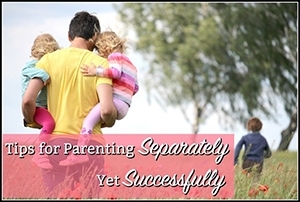
We tend to think about gratitude more around the holidays but a growing body of research suggests that maintaining an attitude of gratitude all year long can improve psychological, emotional and physical well-being. Research from the Greater Good Science Center tells us that gratitude actually blocks toxic emotions even as it allows us to celebrate the present. What’s more, folks with a grateful heart are more stress-resistant and have a higher sense of self-worth. That’s got to be good for our kids, right?
For this post, we asked our Positive Parenting Solutions Facebook community for even more ideas on how they foster an attitude of gratitude with their kids during the holidays and throughout the year.
Here are some of their responses:
We have had a mason jar in our family room with a little square pad of paper and a pen next to it for years. We write notes
and then fold them up and stuff them into the jar. Then, on New Years Eve, we dump the jar and read all the little
notes from the year.
We purchased $5 gift cards to pass out randomly to a great cashier at the grocery store or someplace where the service has
been great…these people are often overlooked. We are also going to bring a box of treats and gift cards to
our local community outreach for the people who work there…since they give SO much of their time and devotion
to others, often on a volunteer basis.
Dinnertime conversation. Each person tells something about their day and we ask what their favorite part of their day was.
Now it is such a ritual that in the morning when I send them off I tell them to “look for their favorites” throughout
the day. They understand this and want to have something new to tell. But, for all of us, if we look for things
to be grateful for we will find that we are living in gratitude and joy.
Less is more! My kids don’t have hordes of toys, and we keep holiday and birthday gifts pretty low-key. I’ve found that with
less “stuff,” they’re more grateful for what they do have. I’m also trying to be better at finding ways to serve
others with my kids. There are so many opportunities out there, especially this time of year! Giving trees, soup
kitchens, you name it. Big or small. We gave some money and a pair of gloves to a homeless man and his dog on
our way to the grocery store a few days ago, and it had more of an impact on my five-year-old than I ever thought
it would.
We each have a notebook in our nightstands and at bedtime we each write (or dictate, age appropriate of course) 3 things
we are thankful for. Sometimes the kids can only muster 1, and I’m happy with that. It’s usually stuff like “ketchup”
or “birthdays” but sometimes it’s meaningful. (And I’m glad they appreciate ketchup! Lol!)
Every time they find a penny or coin say something they are grateful for. Um…it helps if hide some around the house randomly.
Or in the car or underwear drawer…etc.
Our family meetings start with us saying what each person is grateful for about another person at the table.
We clean out their toys every year, right before we decorate for Christmas, and donate them. I cap my children at
4 toys each year for Christmas and one item for their birthday. Making a lasting memorable holiday isn’t about
that one morning, when they open all their gifts. It’s about ice-skating as a family, or getting hot cocoa before
you go picking the tree together and Christmas movie nights snuggled on the couch… That’s what my husband and
I do with our two girls. We truly want these memories to last a lifetime. And I believe kids will see and eventually
appreciate what they have.
Kids must use all their allowance from November and December to make or purchase gifts for others. Visiting a nursing
home to see people who don’t have visitors on Christmas Eve.
I tell him about good things that happen to me, and to us and about how happy I am.
All my kids are teens and on Facebook. At the beginning of November, I reposted this status: “You are challenged
to put something in your status that you are thankful for everyday from November 1st thru Thanksgiving. (or November
through December – or any timeframe for that matter!) This challenge is designed… to remind you just how blessed
you are, and no matter what, how much you have to be thankful for! Will you repost and join the challenge?” My
kids even “liked” some of my statuses. It was so much fun trying to come up with something different each day,
I didn’t want it to end.
Have them make or do something for those less fortunate. Have them write “thank you” cards. Remind them that people
are giving gifts to them, they don’t HAVE to, so each present opened should receive a “thank you”. Giving them
less and focusing on the real meaning of Christmas.
I try every year to get my two daughters, age 8 and 3 years old, to participate in charity. Such as “Samaritan’s Purse Operation Christmas Child” for Christmas. You fill it with small items, toys and toiletries, which are then taken to other
countries… where children are in need. Letting my girls pick out these small items, gender specific, definitely
gives them an understanding that this is the season for “giving”.
I’m going to sponsor a child through Sharefish for each of my children, that way they can feel proud of helping another
child and I’ll have them send letters and drawings to them as well so they can develop a bond. I will explain
to them that for the price of a new Wii game they can help a child go to school and have food for a month.
We are grateful for YOU – our loyal Positive Parenting Solutions community. Thank you for sharing your ideas to foster an
attitude of gratitude and thank you for doing the hard work to be the best parent you can be for your precious kiddos!
Wishing you a blessed holiday!










